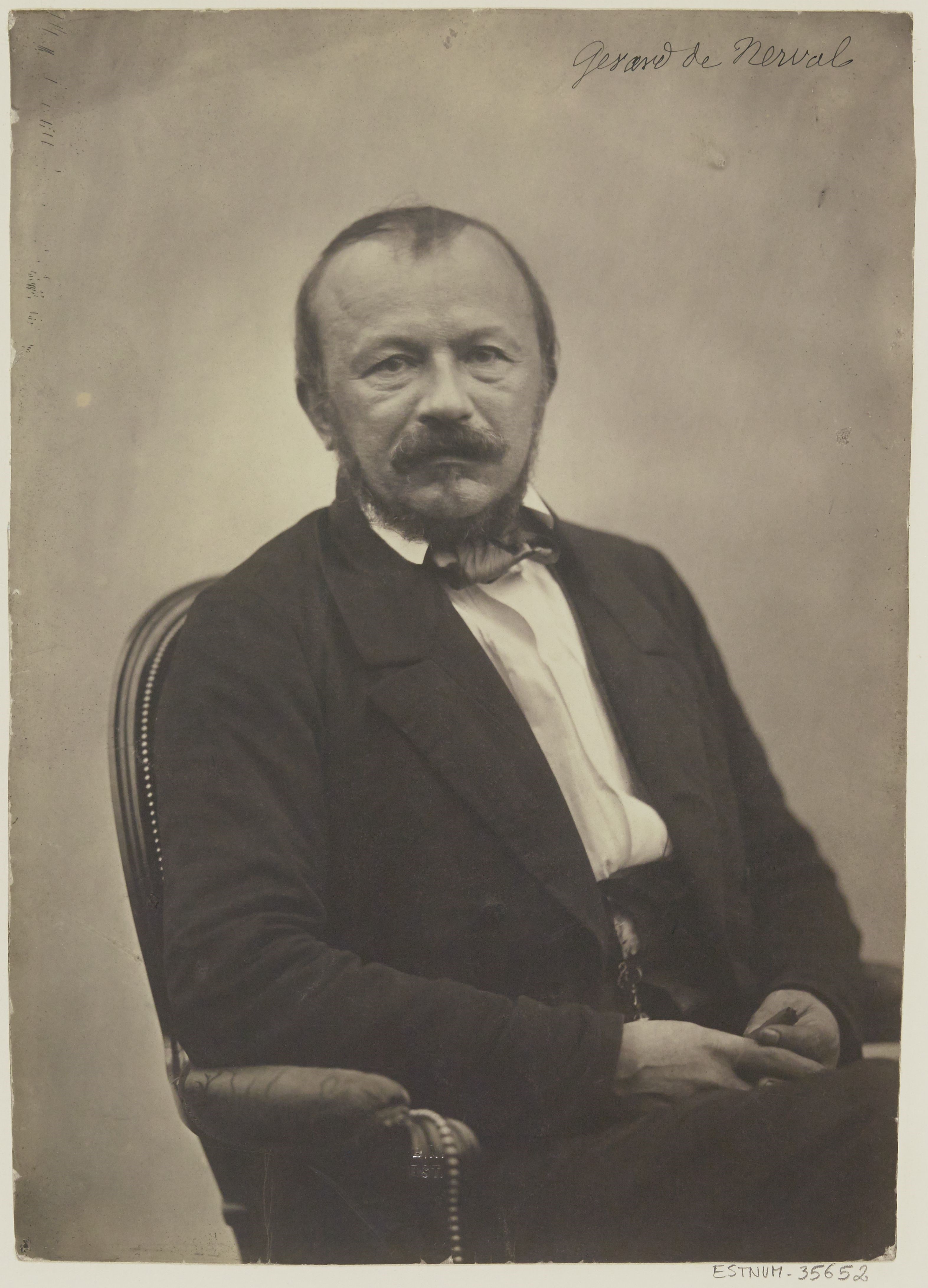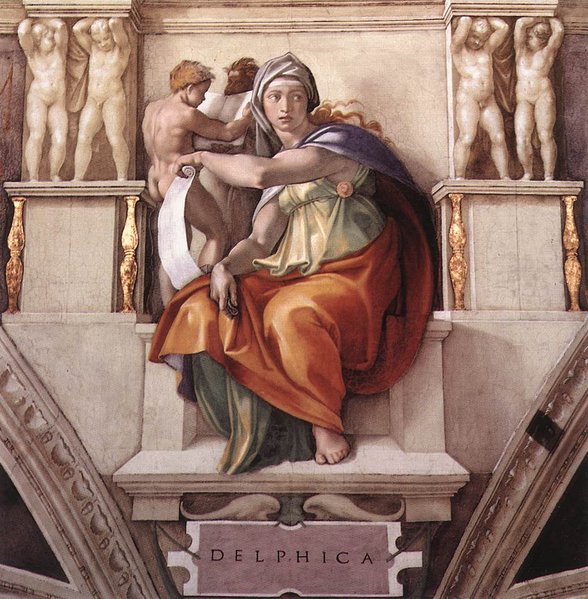|
Delphica
"Delphica" (french: Delfica) is a poem by the French writer Gérard de Nerval, first published in 1845 and later included in ''The Chimeras'', a sequence of eight poems. Like the other ''Chimeras'', it is a sonnet and was written during a period of mental health problems. The poem is addressed to the naiad Daphne, evokes the ancient cult of Apollo at Delphi and forecasts that the gods of classical mythology will return. It revolves around the view that paganism has been dormant or clandestine during the Christian epoch and will see a resurgence. It was published in the magazine ''L'Artiste'' and Nerval's book ''Petits châteaux de Bohème'' (1853) before the complete ''Chimeras'' were published in '' The Daughters of Fire'' (1854). Background Gérard de Nerval (1808–1855) wrote the eight poems that became known as ''The Chimeras'' during a period when he had mental health problems. His doctor Émile Blanche recommended him to use his writing as a form of therapy. "Delphica" took ... [...More Info...] [...Related Items...] OR: [Wikipedia] [Google] [Baidu] |
The Chimeras
''The Chimeras'' (french: Les Chimères) is a sequence of sonnets by the French writer Gérard de Nerval, made up of eight individual poems and a total of twelve sonnets. The poems are: "El Desdichado", "Myrtho", "Horus", "Anteros", " Delphica", "Artemis", "Christ at Gethsemane" (I–V) and "Golden Verses". They were published in the book '' Les Filles du feu'' in January 1854. Background The writer Gérard de Nerval (1808–1855) had mental health problems and his doctor Émile Blanche had recommended him to continue writing as a form of therapy. The poems of ''The Chimeras'' may express his struggle with a particularly difficult period; Nerval spent time in psychiatric hospitals in 1840–1841, 1851, 1853 and 1854. In 1853 he temporarily lost the ability to speak and write, and his identity. His illness made him identify with figures from myths and legends, and in the interplay with these characters in his poems he attempted to create a self. Regarding the obscurity of his ''Chi ... [...More Info...] [...Related Items...] OR: [Wikipedia] [Google] [Baidu] |
Les Filles Du Feu
''Les Filles du feu'' (''The Daughters of Fire'') is a collection of short prose works, poetry and a play published by the French poet Gérard de Nerval in January 1854, a year before his death. During 1853, Nerval had suffered three nervous breakdowns and spent five months in an asylum. He saw ''Les Filles du feu'' as an opportunity to show the public, his friends and his father that he was sane, though except for the introduction all of the pieces in ''Les Filles du feu'' had been published previously: "Angélique" in ''Les Faux Saulniers'' (1850), "Sylvie" in ''La Revue des Deux Mondes'' (1853), and "Émilie", "Jemmy", "Isis" and "Octavie" in diverse reviews. The precise meaning of the title, which Nerval chose just before publication, is uncertain. Scholars have identified its source as the ceremonies of Irish vestal virgins described in Michelet's ''Histoire de France'' (1833) or a poem in a novel by Alexandre Dumas, ''La Tulipe noire'' (1850). Introduction ''Les Filles du fe ... [...More Info...] [...Related Items...] OR: [Wikipedia] [Google] [Baidu] |
Apollo And Daphne, Fresco From South Wall Of Casa Dell’Efebo (Domus P
Apollo, grc, Ἀπόλλωνος, Apóllōnos, label=genitive , ; , grc-dor, Ἀπέλλων, Apéllōn, ; grc, Ἀπείλων, Apeílōn, label=Arcadocypriot Greek, ; grc-aeo, Ἄπλουν, Áploun, la, Apollō, la, Apollinis, label=genitive, , ; , is one of the Twelve Olympians, Olympian deities in Ancient Greek religion, classical Greek and Ancient Roman religion, Roman religion and Greek mythology, Greek and Roman mythology. The national divinity of the Greeks, Apollo has been recognized as a god of archery, music and dance, truth and prophecy, healing and diseases, the Sun and light, poetry, and more. One of the most important and complex of the Greek gods, he is the son of Zeus and Leto, and the twin brother of Artemis, goddess of the hunt. Seen as the most beautiful god and the ideal of the ''kouros'' (ephebe, or a beardless, athletic youth), Apollo is considered to be the most Greek of all the gods. Apollo is known in Greek-influenced Etruscan mythology as ' ... [...More Info...] [...Related Items...] OR: [Wikipedia] [Google] [Baidu] |
Assonance
Assonance is a resemblance in the sounds of words/syllables either between their vowels (e.g., ''meat, bean'') or between their consonants (e.g., ''keep, cape''). However, assonance between consonants is generally called ''consonance'' in American usage. The two types are often combined, as between the words ''six'' and ''switch'', in which the vowels are identical, and the consonants are similar but not completely identical. If there is repetition of the same vowel or some similar vowels in literary work, especially in stressed syllables, this may be termed "vowel harmony" in poetry (though linguists have a different definition of "vowel harmony"). A special case of assonance is rhyme, in which the endings of words (generally beginning with the vowel sound of the last stressed syllable) are identical—as in ''fog'' and ''log'' or ''history'' and ''mystery''. Vocalic assonance is an important element in verse. Assonance occurs more often in verse than in prose; it is used in Eng ... [...More Info...] [...Related Items...] OR: [Wikipedia] [Google] [Baidu] |
Epigraph (literature)
In literature, an epigraph is a phrase, quotation, or poem that is set at the beginning of a document, monograph or section thereof. The epigraph may serve as a preface to the work; as a summary; as a counter-example; or as a link from the work to a wider literary canon, with the purpose of either inviting comparison or enlisting a conventional context. A book may have an overall epigraphy that is part of the front matter, or one for each chapter. Examples * As the epigraph to '' The Sum of All Fears'', Tom Clancy quotes Winston Churchill in the context of thermonuclear war:Why, you may take the most gallant sailor, the most intrepid airman or the most audacious soldier, put them at a table together – what do you get? The sum of their fears. * The long quotation from Dante's ''Inferno'' that prefaces T. S. Eliot's "The Love Song of J. Alfred Prufrock" is part of a speech by one of the damned in Dante's Hell. * The epigraph to E. L. Doctorow's ''Ragtime'' quotes Scott Joplin' ... [...More Info...] [...Related Items...] OR: [Wikipedia] [Google] [Baidu] |
Chimera (mythology)
The Chimera ( or ), also Chimaera (''Chimæra'') (Ancient Greek: , ''Chímaira'' means 'she-goat'), according to Greek mythology, was a monstrous fire-breathing hybrid creature, composed of different animal parts from Lycia, Asia Minor. It is usually depicted as a lion, with the head of a goat protruding from its back, and a tail that might end with a snake's head. It was an offspring of Typhon and Echidna and a sibling of monsters like Cerberus and the Lernaean Hydra. The term "chimera" has come to describe any mythical or fictional creature with parts taken from various animals, to describe anything composed of disparate parts or perceived as wildly imaginative, implausible, or dazzling. Family According to Hesiod, the Chimera's mother was a certain ambiguous "she", which may refer to Echidna, in which case the father would presumably be Typhon, though possibly (unlikely) the Hydra or even Ceto was meant instead. However, the mythographers Apollodorus (citing Hesiod as his ... [...More Info...] [...Related Items...] OR: [Wikipedia] [Google] [Baidu] |
Classical Antiquity
Classical antiquity (also the classical era, classical period or classical age) is the period of cultural history between the 8th century BC and the 5th century AD centred on the Mediterranean Sea, comprising the interlocking civilizations of ancient Greece and ancient Rome known as the Greco-Roman world. It is the period in which both Greek and Roman societies flourished and wielded huge influence throughout much of Europe, North Africa, and Western Asia. Conventionally, it is taken to begin with the earliest-recorded Epic Greek poetry of Homer (8th–7th-century BC), and continues through the emergence of Christianity (1st century AD) and the fall of the Western Roman Empire (5th-century AD). It ends with the decline of classical culture during late antiquity (250–750), a period overlapping with the Early Middle Ages (600–1000). Such a wide span of history and territory covers many disparate cultures and periods. ''Classical antiquity'' may also refer to an idealized v ... [...More Info...] [...Related Items...] OR: [Wikipedia] [Google] [Baidu] |
Arch Of Constantine
The Arch of Constantine ( it, Arco di Costantino) is a triumphal arch in Rome dedicated to the emperor Constantine the Great. The arch was commissioned by the Roman Senate to commemorate Constantine's victory over Maxentius at the Battle of Milvian Bridge in AD 312. Situated between the Colosseum and the Palatine Hill, the arch spans the ''Via Triumphalis'', the route taken by victorious military leaders when they entered the city in a triumphal procession. Dedicated in 315, it is the largest Roman triumphal arch, with overall dimensions of high, wide and deep. It has three bays, the central one being high and wide and the laterals by each. The arch is constructed of brick-faced concrete covered in marble. The three bay design with detached columns was first used for the Arch of Septimius Severus in the Roman Forum (which stands at the end of the triumph route) and repeated in several other arches now lost. Though dedicated to Constantine, much of the sculptural decoratio ... [...More Info...] [...Related Items...] OR: [Wikipedia] [Google] [Baidu] |
Sibyl
The sibyls (, singular ) were prophetesses or oracles in Ancient Greece. The sibyls prophesied at holy sites. A sibyl at Delphi has been dated to as early as the eleventh century BC by PausaniasPausanias 10.12.1 when he described local traditions in his writings from the second century AD. At first, there appears to have been only a single sibyl. By the fourth century BC, there appear to have been at least three more, Phrygian, Erythraean, and Hellespontine. By the first century BC, there were at least ten sibyls, located in Greece, Italy, the Levant, and Asia Minor. History The English word ''sibyl'' ( or ) is from Middle English, via the Old French and the Latin from the ancient Greek (). Varro derived the name from an Aeolic ''sioboulla'', the equivalent of Attic ''theobule'' ("divine counsel"). This etymology is still widely accepted, although there have been alternative proposals in nineteenth-century philology suggesting Old Italic or Semitic derivation. The fi ... [...More Info...] [...Related Items...] OR: [Wikipedia] [Google] [Baidu] |
Cadmus
In Greek mythology, Cadmus (; grc-gre, Κάδμος, Kádmos) was the legendary Phoenician founder of Boeotian Thebes. He was the first Greek hero and, alongside Perseus and Bellerophon, the greatest hero and slayer of monsters before the days of Heracles. Commonly stated to be a prince of Phoenicia, the son of king Agenor and queen Telephassa of Tyre, the brother of Phoenix, Cilix and Europa, Cadmus could trace his origins back to Zeus. Originally, he was sent by his royal parents to seek out and escort his sister Europa back to Tyre after she was abducted from the shores of Phoenicia by Zeus. In early accounts, Cadmus and Europa were instead the children of Phoenix.Scholia on Homer, ''Iliad'' B, 494, p. 80, 43 ed. Bekk. as cited in Hellanicus' ''Boeotica'' Cadmus founded the Greek city of Thebes, the acropolis of which was originally named ''Cadmeia'' in his honour. Cadmus' homeland was the subject of significant disagreement among ancient authors. Apollodorus identi ... [...More Info...] [...Related Items...] OR: [Wikipedia] [Google] [Baidu] |
Python (mythology)
In Greek mythology, Python ( el, Πύθων; ''gen''. Πύθωνος) was the serpent, sometimes represented as a medieval-style dragon, living at the center of the earth, believed by the ancient Greeks to be at Delphi. Mythology Python, sometimes written Pytho, presided at the Delphic oracle, which existed in the cult center for its mother, Gaia, "Earth", Pytho being the place name that was substituted for the earlier ''Krisa''. Greeks considered the site to be the center of the earth, represented by a stone, the '' omphalos'' or navel, which Python guarded. Python became the chthonic enemy of the later Olympian deity Apollo, who slew it and took over Python's former home and oracle. These were the most famous and revered in the ancient Greek and Roman worlds. Like many monsters, Python was known as Gaia's son and prophesied as Gaia's son. Therefore, Apollo had to eliminate this opponent before establishing his temple in Delphoi. Versions and interpretations There are ... [...More Info...] [...Related Items...] OR: [Wikipedia] [Google] [Baidu] |
Temple Of Apollo (Delphi)
The Temple of Apollo, god of music, harmony, light, healing, and oracles occupied the most important and prominent position in the Delphic Panhellenic Sanctuary. The edifice with the partially restored colonnade visible today dates to the 20th century BC and, according to ancient accounts, five different temples were built throughout history. The famous oracle, the Pythia, operated inside the temple, the location chosen, according to one tradition, due to a sacred chasm beneath the site emitting vapours, which were inhaled by the Pythia.Greek Ministry of Culture and Tourism, 10th Ephorate of Prehistoric and Classical Antiquities, from the information plaque at the temple. Location Located on Mount Parnassos in Central Greece, the Temple of Apollo at Delphi is part of the Panhellenic Sanctuary at Delphi and occupies a remote, but central location relative to Greek settlements. The temple's heightened position upon the mountain signifies both the prominence of Apollo and the sanct ... [...More Info...] [...Related Items...] OR: [Wikipedia] [Google] [Baidu] |








